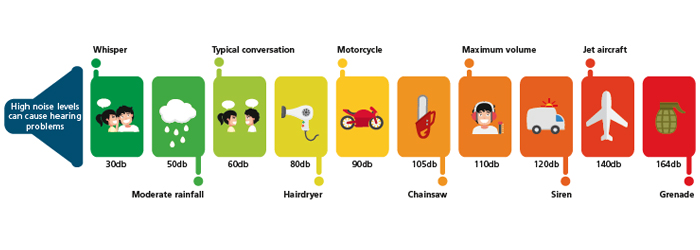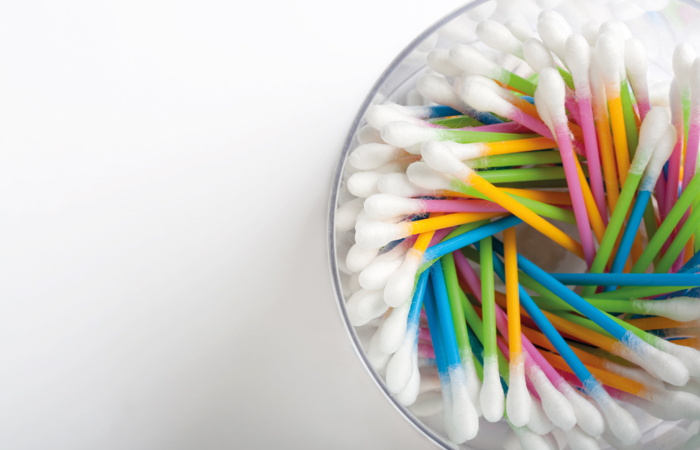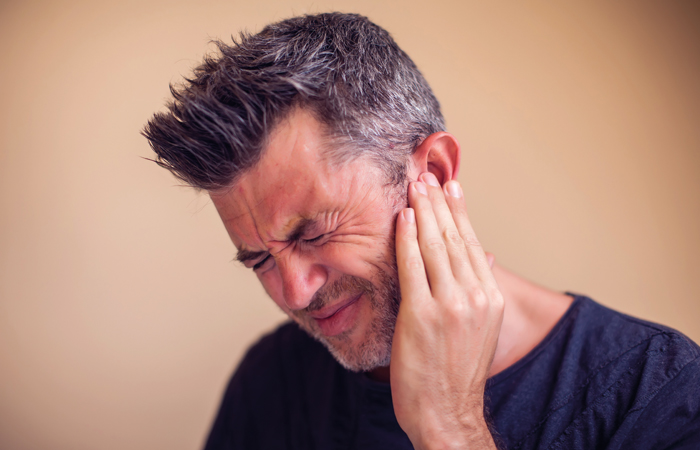Play it by ear
In OTC
Follow this topic
Bookmark
Record learning outcomes
Listen up! Modern lifestyles are affecting ear health. Find out how pharmacy teams can help customers protect their hearing and keep ears healthy
Modern lifestyles mean that people spend a lot of time plugged in. Whether it’s watching a new series on the commute or listening to some motivational music during a run, technology offers access to a whole new world of audio options. But as entertainment is at the forefront of their minds, many people will not consider the negative effect this can have on the ears.

Hearing loss currently affects 11 million people in the UK – approximately one in six people – according to charity Action on Hearing Loss. It is estimated that this figure will increase to around 15.6 million people by 2035, which is one in five people.
Most people lose at least some degree of their hearing as they age, however there is a whole host of advice, support and over the counter (OTC) recommendations pharmacy teams can offer to customers to encourage them to be aware of their ear health and look after their ears and hearing.
Hardly hear
There are three main types of hearing loss:
- Conductive hearing loss occurs when sounds cannot pass from the outer ear to the inner ear. This is often because of a blockage, such as earwax. Sounds become quieter and sometimes muffled. This hearing loss can be temporary or permanent
- Sensorineural hearing loss is caused by damage to the hair cells inside the inner ear, damage to the hearing nerve or both. This changes a person’s ability to hear quiet sounds and reduces the quality of the sound that can be heard. It is also permanent
- Mixed hearing loss is a combination of conductive and sensorineural hearing loss.
Raising the risk
Hearing loss can be due to multiple factors such as age, genetics and even some prescription medicines. But increasingly, aspects of modern lifestyles are contributing to hearing loss and other ear health problems, such as noise exposure, unhealthy diets and smoking.
-
Noise exposure
After ageing, exposure to loud noise is the biggest cause of hearing loss, according to charity Action on Hearing Loss. Prolonged exposure to excessive levels of noise, such as loud music, noisy workplaces or extremely loud bursts of sound, can damage the structure of the ear.
“Noise exposure is the main problem affecting our hearing in the 21st century, typically now through directed loud volume music listened to through bud-type headphones,” says Dr Robert Henderson, GP and Earex expert. “When exposed to such volumes for extended periods of time over months or years, hearing loss can be a result in subsequent years.”
Dr Henderson explains that any degree of earwax impaction means that people are likely to turn the volume up on their headphones to compensate for the muffled sound caused by the wax. This compounds the problem and creates a vicious cycle.
Noise is measured using the decibel (dB) scale, human ear sensitivity can be measured using this scale. Sounds under 85dB should be safe to listen to, but hearing is at risk after only 15 minutes when listening to sounds around 100dB. This is the approximate sound level of the average nightclub.

Pharmacy teams can recommend ear protectors, earplugs or canal caps for customers regularly exposed to loud noise to reduce the level of sound reaching the ears. Dr Henderson also advises that people limit headphone usage to no more than an hour a day, preferably in two 30-minute chunks and choose over-head headphones over bud-type versions where possible.
Hearing loss currently affects 11 million people in the UK
-
Unhealthy diet
Diets high in sugar, salt and carbohydrates can detrimentally impact hearing. As reported in the national press earlier in 2019, a teenager was the first person in the UK to go deaf and blind due to a poor diet that consisted of very fatty, nutrient deficient foods.
A poor diet can also lead to cardiovascular diseases such as high blood pressure, thrombosis, stroke and heart attack. These conditions are closely linked with hearing loss as the inner ear is extremely sensitive to blood flow and the cochlea can be damaged if blood flow is reduced. In addition, foods high in salt and sugar can negatively affect fluid levels in the body, which can lead to ear infections. And excessive caffeine intake can exacerbate some hearing loss, for example through tinnitus.
There is also a link between hearing and certain vitamins and minerals. Some studies suggest that deficiency in nutrients, such as folic acid and vitamin B12, can impair hearing by as much as 39 per cent. Folic acid deficiency in particular has been linked with high-frequency hearing loss.
When advising customers on healthy living, pharmacy teams can inform customers that a poor diet can affect all aspects of health they may not even consider, such as ear health. Encouraging customers to eat a healthy balanced diet can help them keep their ear health, as well as their overall health, on track.
-
Smoking
Hearing loss might not be the most obvious consequence of smoking, but studies suggest that smokers are anything up to 70 per cent more likely to experience hearing loss than non-smokers. The elevated risk of hearing loss even applies to non-smokers living with a smoker, who are twice as likely to develop hearing loss than those who are not exposed at all.
Smoking affects hearing in many different ways, but one of the main reasons is that nicotine and carbon monoxide lower oxygen blood levels and constrict blood vessels all over the body, including the ones in the inner ear. Nicotine and cigarette smoke also interfere with neurotransmitters in the auditory nerve that are responsible for telling the brain what sounds an individual is hearing, as well as irritating the Eustachian tube and lining of the middle ear.
Pharmacy teams can take the opportunity to mention hearing loss during consultations about stopping smoking, even if there is not a formal smoking cessation service in place, in order to make customers aware of this link and give them another reason to quit.
NICE guidance
A new National Institute for Health and Care Excellence (NICE) quality standard for hearing loss in adults was published in July 2019. It provides information on best practice for earwax, sudden onset hearing loss, hearing loss and hearing aids, including when people should be referred for more specialist care.
The quality standard suggests that pharmacy teams should be aware of any locally agreed referral pathways that are in place for adults with any of these concerns and are referred for immediate or urgent specialist medical care at an appropriate healthcare service where necessary.
There is also a comprehensive list of organisations that support the quality standard, which provides a good starting point for signposting customers to for additional help and support.
Earwax is common, normal and natural and performs an important function
Helping with hearing loss
Pharmacy teams can provide advice and support to help people suffering with hearing loss and those using hearing aids. But Dr Henderson says pharmacy teams also have a role to play in helping people actively prevent hearing loss. This includes advising people to:
- Avoid poking anything in their ears
- Always dry the ears thoroughly when wet
- Avoid listening to loud music through headphones
- Have regular hearing checks
- Seek medical advice if they feel their hearing is getting worse.
For those already dealing with hearing loss, pharmacy teams can encourage customers to have regular hearing checks, as well as checking hearing aids and their batteries.
There are ways to make pharmacy services more accessible too, says Francesca Oliver, audiologist at Action for Hearing Loss. “Ensure you have taken the need of customers with hearing loss into account when they visit, such as reducing background noise where possible, using a loop system if appropriate and making sure you face a customer so they can see your face, and not covering your mouth when talking to allow lip-reading,” she explains.
Action for Hearing Loss has information about making GP services accessible for people with hearing loss and many of these tips can be transferred to a pharmacy setting too.
Earwax
Earwax is contentious by modern day beauty standards. It is not regarded as especially appealing, and is often wrongly associated with a lack of personal hygiene. In fact, earwax is common, normal and natural and performs an important function.
The ear produces cerumen, more commonly known as earwax, which forms a protective coating within the ear canal, it can act as a temporary water repellent, and keeps the ear clean, trapping dust. The ear is therefore self-cleaning and wax should naturally fall out of the ear, taking with it the dust it has collected. However, wax build-up can sometimes be a problem, especially for people who naturally produce more wax, have narrow ear canals, or have impacted wax resulting from inserting things like cotton buds into the ear.
“Never put anything smaller than your elbow in your ear is a good medical maxim here,” says Dr Henderson. “Don’t use cotton buds to try to remove earwax as this usually only pushes the wax deeper into the ear and makes it more difficult to remove”.
OTC ear drops can be recommended to help to soften earwax, making it easier to remove if it becomes impacted. “Most cases of earwax do not require any formal treatment as it simply falls out by itself,” Dr Henderson explains. “However, if symptoms are present or the wax becomes impacted and forms a plug in the ear, blocking it, then removal is usually recommended.”

Tinnitus
Approximately 13 per cent of the UK population suffer with tinnitus, according to the British Tinnitus Association (BTA).
Tinnitus is characterised by hearing noises that are not caused by an external source. This can include a number of sounds such as ringing, humming, buzzing, throbbing and even music. It can occur in one or both ears, either continuously or every now and again. Approximately one in eight UK adults have persistent tinnitus, according to the BTA.
Tony Kay, president of the BTA and head of audiology services at Aintree University Hospital, Liverpool University Hospitals NHS Foundation Trust, says: “It is recommended that individuals complaining of tinnitus should be referred for a hearing assessment. Some may require advanced imaging such as a magnetic resonance imaging (MRI) scan to exclude serious causes, although serious causes are rare”.
Tinnitus is a symptom rather than a condition in itself and it can be especially distressing as it is not exactly known what causes it. However, there are steps that can be taken to manage the condition and pharmacy teams can be on hand with advice and reassurance.
“Reassure [customers] that tinnitus is common, will probably become less distressing with time and there are devices and management options that may help”, Tony explains. He says pharmacy teams can also help customers by:
- Suggesting they have a medication review to check if they are on ototoxic (toxic to the ear) medication
- Signpost customers to the BTA and local tinnitus support groups
- Recommend ear protection when exposed to loud noise
- Recommend a healthy lifestyle
- Avoid poking anything in the ears
- Recommend a check-up from their GP.
Some products available to help people with tinnitus include hearing aids, wearable sound generators, desktop sound generators, telephone applications and pillow speakers.
The BTA has free resources available for pharmacies, including posters, postcards and patient information leaflets. The charity also runs a tinnitus awareness week every February, which pharmacies can get involved in.
After ageing, exposure to loud noise is the biggest cause of hearing loss
Top tips
Dr Henderson recommends that everyone should be checking their ear health from around the age of 26. As people get older, hearing loss is often so subtle that they do not notice and by their 50s and 60s it can be too late to do anything about it. There are no set guidelines for hearing check ups, but Dr Henderson advises that people in their 20s, 30s and 40s should have a hearing test every three years and those 50 and over every two years.
Major aches

Ear problems are common, especially in children, with pain and hearing loss particularly prominent symptoms. But pharmacy teams can be on hand with advice and recommendations of over-the-counter products that can help.
Otitis media
This is an infection of the middle ear in which symptoms can manifest as hearing loss, fever, earache and even tinnitus. Babies may pull and tug at their ears. If not properly treated, it can result in a ruptured eardrum causing pain and deafness.
For a simple case of otitis media, antibiotic treatment may be required, but pharmacy staff can recommend paracetamol and ibuprofen for any pain.
Glue ear
Glue ear is a type of chronic otitis media. It occurs when there has been a long-term build up of thick and sticky fluid in the middle ear behind the eardrum, causing hearing loss.
The condition is often not treated as it usually clears up on its own within three months. Children are usually monitored for up to a year in case symptoms change or get worse.
Otitis externa
Also known as swimmer’s ear, otitis externa is a fungal or bacterial infection that affects the ear canal. This is often a result of too much water entering the ear, which removes the protective layer of earwax coating the ear canal and makes it vulnerable to infection. Symptoms include pain and itching, dulled hearing and discharge.
A product containing a solution of acetic acid can be recommended for mild cases. For severe cases, an anti-inflammatory prescription product that contains antibiotic or antifungal may be necessary.
